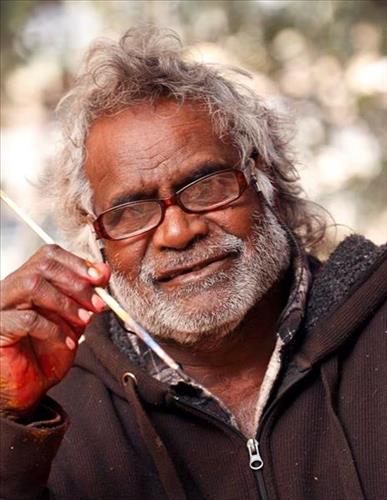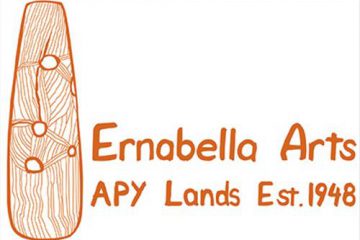Biography:
"Mr Jack's enigmatic pots use the clay surface as the palimpsest upon which to place his unique take on the traditional stories and legends from his community at Ernabella." (Glenn Barkley, 2016)
Rupert Jack is a senior Pitjantjatjara artist at Ernabella Arts working between the painting and ceramics studios. He is also the community pastor. He lives between his homeland, a place named Racecourse, and Ernabella (Pukatja) community.
“I was born in Mimili in 1951. I was still a little baby when I moved to Kenmore with my father and mother. My father worked for whitefellas digging wells and anything else. I stayed in Kenmore until I was a man. Then I moved to Ernabella for marriage. I have been a pastor for over twenty years. I spent a long time travelling around, everywhere, Western Australia, Northern Territory, working for the church. Talking and singing, inma. I still know traditional tjukurpa. These are good stories for Anangu. They show you how to look after people. “
He is renowned for his striking hand-built forms that speak of his country, law and faith. His work depicts the maku (witchetty grub), tjala (honey ants), ili (bush fig), kaltu kaltu (bush seed that is ground into a flour to make a kind of damper and also Rupert’s father’s name) and ngata (bush berry) dreamings, as well as biblical stories of Moses and Abraham.
Informed by his knowledge of both traditional stories and the bible his work often draws connections between the two. Interestingly he employs the same visual language and iconography to depict both themes.
In 2016 Rupert was featured in the Australian Biennale of Ceramics, curated by Glenn Barkley. In the catalogue Barkley described Rupert's work as celebrating "clay’s talismanic potential." In 2017 Rupert continued to develop his ceramic practice, exhibiting works at Alcaston Gallery, Araluen Art Centre, Sturt Gallery and Harvey Arts (USA). He was also a finalist in the 2017 Muswellbrook Ceramic Prize.
Rupert’s art has been acquired by the National Museum of Australia, ArtBank, the University of Western Australia, the Royal Perth Hospital and the Australian Embassy in Zagreb.
In 2017 Rupert featured in Clay Stories: Contemporary Indigenous ceramics from remote Australia at JamFactory presented by Sabbia Gallery, Sydney for Tarnanthi: Festival of Contemporary Aboriginal and Torres Strait Islander art, which then toured to regional galleries.
In 2018 and 2019 Rupert was a finalist in the National Aboriginal and Torres Strait Islander Art Award (The Telstras).
In 2020 Rupert had his first solo exhibition featuring his ceramics at Alcaston Gallery in Melbourne.




